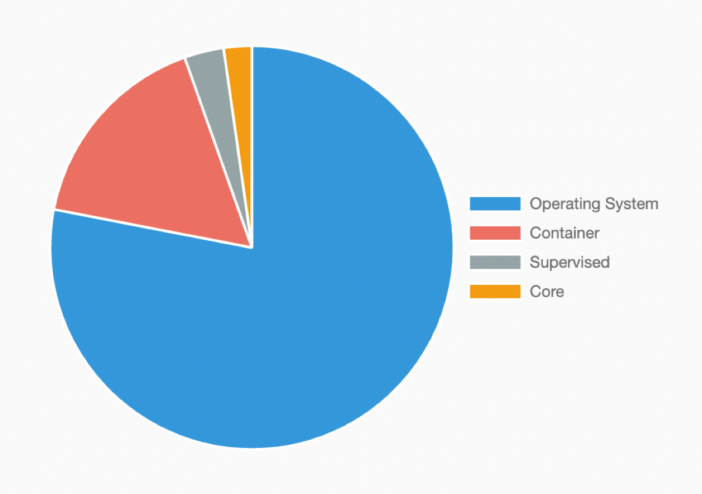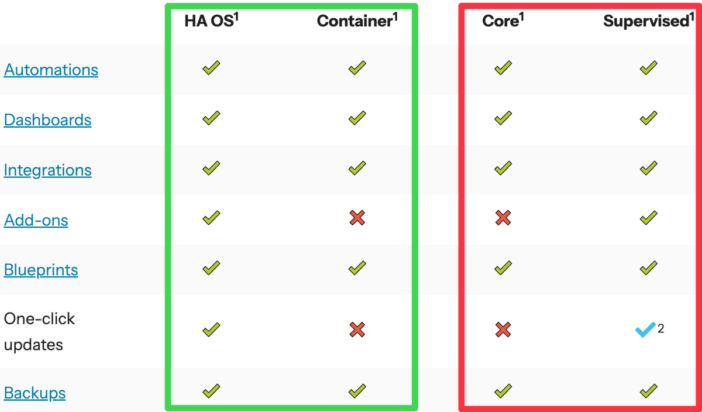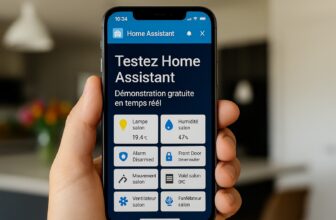Thunderclap in the world of home automation! Home Assistant, the open-source software that has conquered our connected homes (and our geeky hearts), has just announced a decision that will shake up quite a few habits: the end of Core and Supervised installations and support for 32-bit systems. Yes, you read that right. We are putting away the old Raspberry Pis and preparing for a new era, more modern, more stable, but also a bit more exclusive. Let’s take a tour of this decision that will leave no one indifferent.
A bit of history: why so many installation methods?
Home Assistant is a bit like the Swiss Army knife of connected homes. Since its inception, it has attracted both tinkerers and professional installers thanks to its flexibility: it could be installed almost anywhere, from the old Raspberry (Raspberry Pi 3 or even 2!) to a powerful server VM, passing through the NAS or the recycled mini-PC. Core, Supervised, OS, Container… There was something for every taste and skill level. A true all-you-can-eat buffet for home automation enthusiasts!
But here’s the thing, in trying to please everyone, the diversity of installation methods has become a headache for the development team. Between the bugs specific to each environment, hardware incompatibilities, and users lost in the tutorial jungle, it was time for some spring cleaning. And let’s be honest, who hasn’t cursed a failed update because they opted for a somewhat exotic installation method?

The decision: refocusing to move forward
The axe fell on May 22, 2025: Home Assistant will officially cease support for Core and Supervised installations, as well as all 32-bit systems. From now on, the royal path is Home Assistant OS or, for the more seasoned, the container installation (Docker). The goal? Simplify maintenance, improve stability, and allow the team to focus its efforts on innovation rather than managing unlikely configurations.
Concretely, if you are still using Home Assistant Core (manual installation on a local Python) or Supervised (the famous combo Debian + Docker + Supervisor), it’s time to think about migrating. Security updates and new features will no longer be guaranteed on these methods. As for the 32-bit systems, they are taking their bows, primarily because they can no longer keep up with modern demands (and frankly, who wants to deal with a sluggish home automation?).
Why this shift? A pragmatic choice (and a bit of passion)
The Home Assistant team is not taking this decision lightly. Behind this cleanup, there is a real desire to make the platform more reliable. For example, 32-bit systems are becoming increasingly rare and struggle to keep pace with updates. The Core and Supervised methods, on the other hand, generated an incalculable number of support tickets, often linked to overly customized environments or capricious external dependencies.
By focusing on Home Assistant OS, the team can guarantee a more homogeneous experience, seamless updates, and better-controlled hardware compatibility. Gone are the unpleasant surprises after a reboot or the sleepless nights debugging an integration that refuses to launch! It’s a bit like moving from an old patched-up 2CV to a state-of-the-art electric car: less tinkering, more comfort… and a little less nostalgia, inevitably.
And for users? The big leap (or the small step)
Don’t panic! If you are running Home Assistant on a Core or Supervised installation, nothing will explode overnight. But you will need to anticipate. The team recommends migrating to Home Assistant OS, which installs in just a few minutes on most recent Raspberry Pis, Intel NUCs, or even virtual machines. For the die-hard Docker fans, the Container option remains available, but you’ll need to be willing to get your hands dirty for some advanced functions (like add-ons or Supervisor management).
A concrete example? Imagine a family controlling their heating, lights, and roller shutters with Home Assistant installed on an old Raspberry Pi 3 in 32-bit. With the new policy, it will be time to upgrade to a Pi 4 (or even a shiny new Pi 5!), switch to Home Assistant OS, and enjoy a smoother interface, automatic updates, and improved compatibility with the latest integrations. The evenings of battling with outdated Python dependencies are over!

Impacts on hardware and ecosystem
This refocus will inevitably have consequences on the hardware used. Older Raspberry Pi models (Pi 2, Pi 3 in 32-bit) will collect dust, while recent x86 mini-PCs or NAS will become the favorites of installers. Professional integrators will see this as an opportunity to offer more robust solutions to their clients, with simplified support and reduced technical interventions.
Opting for compatible hardware
It is still possible to install Home Assistant on a last-generation Raspberry Pi, a mini PC, or simply use the official Home Assistant boxes, which have proven themselves and are very affordable. The simple solution, which I have also set up at home!
Towards a simpler, more reliable… and more ambitious home automation
By drawing a line under outdated installation methods, Home Assistant gives itself the means of its ambitions. The team will be able to focus on real innovations: more powerful integrations, intelligent automations, increased compatibility with Matter and Thread… In short, everything that excites smart home enthusiasts.
And let’s be honest, who hasn’t dreamed of home automation that “just works”? Less time spent debugging, more time to enjoy your connected home, that’s all we wish for the community. And if you happen to be the kind who loves tinkering, nothing stops you from keeping an old Pi to test new features in advance.
Conclusion? We move forward and keep smiling!
Yes, the page is turning. Yes, we will have to say goodbye to certain habits. But behind this change, the entire Home Assistant ecosystem is gaining maturity. Less complexity, more reliability, and a future that looks even more exciting for open source home automation.







Please remain courteous: a hello and a thank you cost nothing! We're here to exchange ideas in a constructive way. Trolls will be deleted.